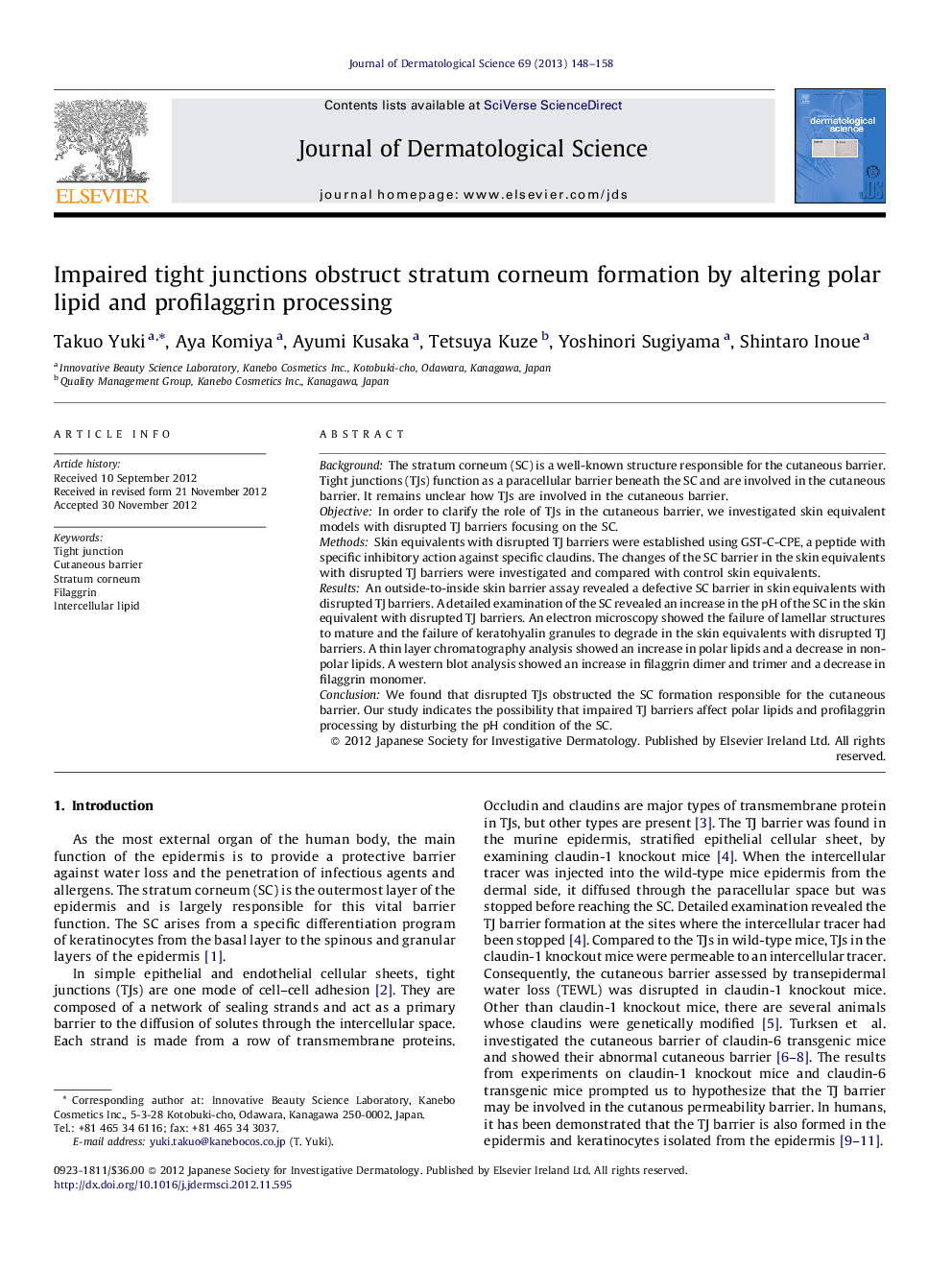| کد مقاله | کد نشریه | سال انتشار | مقاله انگلیسی | نسخه تمام متن |
|---|---|---|---|---|
| 3213193 | 1203223 | 2013 | 11 صفحه PDF | دانلود رایگان |

BackgroundThe stratum corneum (SC) is a well-known structure responsible for the cutaneous barrier. Tight junctions (TJs) function as a paracellular barrier beneath the SC and are involved in the cutaneous barrier. It remains unclear how TJs are involved in the cutaneous barrier.ObjectiveIn order to clarify the role of TJs in the cutaneous barrier, we investigated skin equivalent models with disrupted TJ barriers focusing on the SC.MethodsSkin equivalents with disrupted TJ barriers were established using GST-C-CPE, a peptide with specific inhibitory action against specific claudins. The changes of the SC barrier in the skin equivalents with disrupted TJ barriers were investigated and compared with control skin equivalents.ResultsAn outside-to-inside skin barrier assay revealed a defective SC barrier in skin equivalents with disrupted TJ barriers. A detailed examination of the SC revealed an increase in the pH of the SC in the skin equivalent with disrupted TJ barriers. An electron microscopy showed the failure of lamellar structures to mature and the failure of keratohyalin granules to degrade in the skin equivalents with disrupted TJ barriers. A thin layer chromatography analysis showed an increase in polar lipids and a decrease in non-polar lipids. A western blot analysis showed an increase in filaggrin dimer and trimer and a decrease in filaggrin monomer.ConclusionWe found that disrupted TJs obstructed the SC formation responsible for the cutaneous barrier. Our study indicates the possibility that impaired TJ barriers affect polar lipids and profilaggrin processing by disturbing the pH condition of the SC.
Journal: Journal of Dermatological Science - Volume 69, Issue 2, February 2013, Pages 148–158